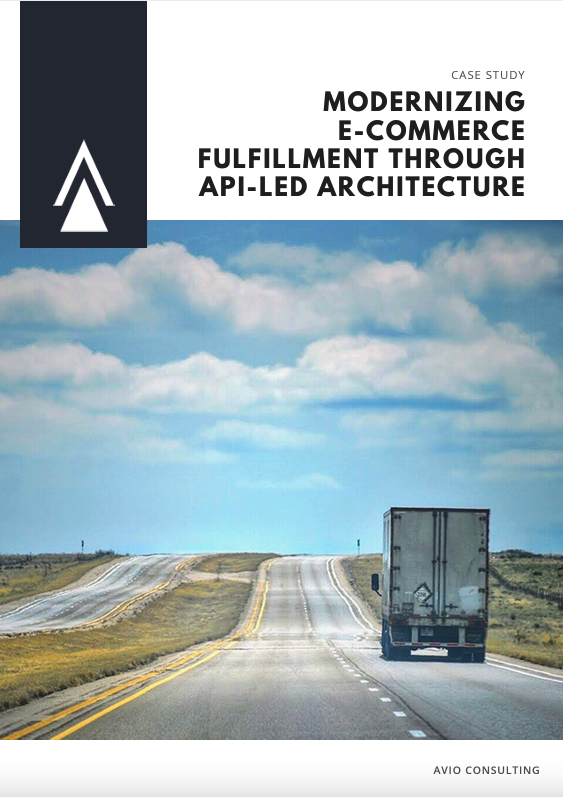Case Study
Modernizing E-Commerce Fulfillment Through API-Led Architecture
Customer Overview
This transportation client wanted to utilize IoT in order to improve their processes in multiple ways: First, the client wanted to track data from multiple transponder types on trucks and trailers owned by their partners. However, since the client did not own the corresponding hardware or software on their partner’s trucks, this made real-time fleet tracking and management difficult. Second, the client also faced not just legacy technologies but inefficient manual and paper-based processes to accompany them. The client needed to become more agile to incorporate emerging web and mobile applications into their tech stack. Finally, to make things more complicated, the clients’ competitors were mobile-friendly, technology-forward companies that were beating them in these very domains. Ultimately, the client wanted to find a way to get the comprehensive real-time fleet tracking they were lacking in their processes, move past paper document reporting, and keep up with evolving digital requirements.
This transportation client wanted to utilize IoT in order to improve their processes in multiple ways: First, the client wanted to track data from multiple transponder types on trucks and trailers owned by their partners. However, since the client did not own the corresponding hardware or software on their partner’s trucks, this made real-time fleet tracking and management difficult. Second, the client also faced not just legacy technologies but inefficient manual and paper-based processes to accompany them. The client needed to become more agile to incorporate emerging web and mobile applications into their tech stack. Finally, to make things more complicated, the clients’ competitors were mobile-friendly, technology-forward companies that were beating them in these very domains. Ultimately, the client wanted to find a way to get the comprehensive real-time fleet tracking they were lacking in their processes, move past paper document reporting, and keep up with evolving digital requirements.
Download Case Study
"*" indicates required fields
A Sneak Peak in the Case Study
AVIO worked with the client to implement the following agnostic omnichannel solution with scalable, traceable, and accurate API-led architecture. The client didn’t just need a solution for today, but for three to five years from now when they were working with larger volumes of data.
This API-led architecture works on the foundation of integrating with the client’s core systems. Once that foundation is in place, the systems can be orchestrated and the processes optimized so the first pilot project can take place.
AVIO’s API solution was able to provide data from the first transponder. The client was able to receive that data and process it through the process layer APIs. From there, they connected it to their core systems with their system layer APIs.
As a next step, AVIO was able to help the client add a new transponder type, enabling them to reuse their underlying API assets. This reuse reduced the time it took to deliver value on subsequent projects.

